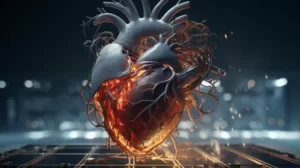It’s no secret that medical professionals have made significant advancements in reducing the risk of dying from heart attacks. In fact, the death rate from coronary heart disease has dropped by an impressive 38 percent in the past decade. A large part of this improvement can be attributed to the increased efficiency and effectiveness of hospitals and emergency rooms in treating heart attack patients.
Speed is Key
One crucial factor in surviving a heart attack is the speed at which you receive treatment. The American College of Cardiology and the American Heart Association have led the way in improving the speed of treatment for heart attack sufferers. They’ve encouraged hospitals to assemble cardiology-intervention teams even before heart attack patients arrive in the emergency room.
As a result, doctors are now saving more lives by providing fast treatment in cases where delay could have resulted in death. This just goes to show that when our medical system puts its mind to it, it can be exceptionally proficient in treating acute, life-threatening conditions.
However, it’s essential to remember that while hospitals have improved their performance, your survival also depends on how quickly you recognize the signs of a heart attack and seek help.
Recognizing the Signs of a Heart Attack
You must familiarize yourself with the following heart attack symptoms and call 911 as soon as you experience any of them:
- Pain in your upper abdomen or upper back – this happens most commonly in women.
- Shortness of breath.
- Dizziness.
- Left shoulder pain or numbness; aching down your left arm or into your jaw.
- Chest heaviness, tightness, squeezing, burning, pressure, or discomfort.
- Palpitations of the heart – beating fast or irregularly.
- A tight throat or a lump in the throat.
- Cold sweat.
- Nausea.
- An impending sense of doom.
- Weakness.
- Symptoms that begin with low intensity and increase over several minutes.
- Unaffected pain when taking a deep breath, pressing on the chest, or moving the part of the body where symptoms are occurring.
Preventing Heart Attacks
Although there has been a significant improvement in heart attack survival rates, heart disease remains the leading cause of death among Americans. To reduce your risk of developing heart problems, there are a few things you can do to put the odds in your favor.
First and foremost, maintain a positive mood. Danish research involving 600 people with coronary disease found that those with an upbeat attitude were 42 percent less likely to die during the study. A good mood, coupled with regular exercise, also reduced the risk of hospitalizations to treat heart-related issues.
In addition, adopt a heart-healthy diet and exercise regularly. Consuming a diet rich in fruits, vegetables, whole grains, lean proteins, and low-fat dairy products is crucial in reducing the risk of heart disease. Participating in at least 150 minutes of moderate aerobic exercise or 75 minutes of vigorous aerobic exercise per week has also been shown to provide significant heart-health benefits.
In Conclusion
Though much progress has been made in the field of heart attack treatment and survival rates, it’s up to you to recognize the signs and seek help immediately if you ever experience heart attack symptoms. Stay alert, stay positive, and stay healthy!



